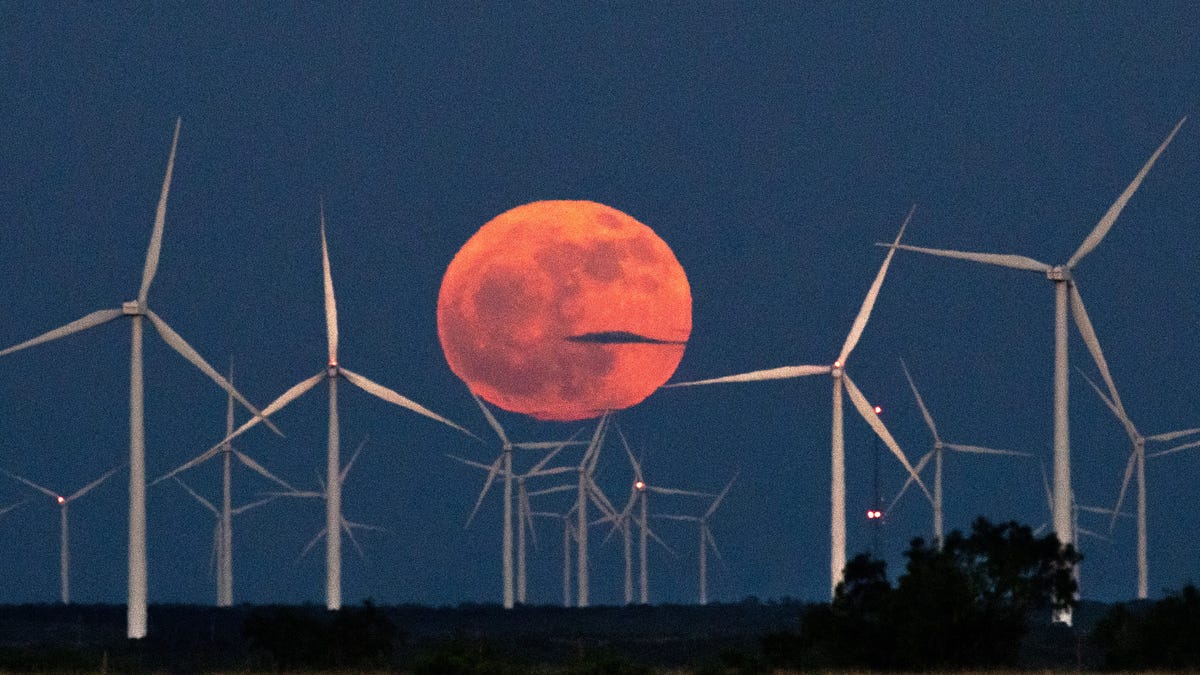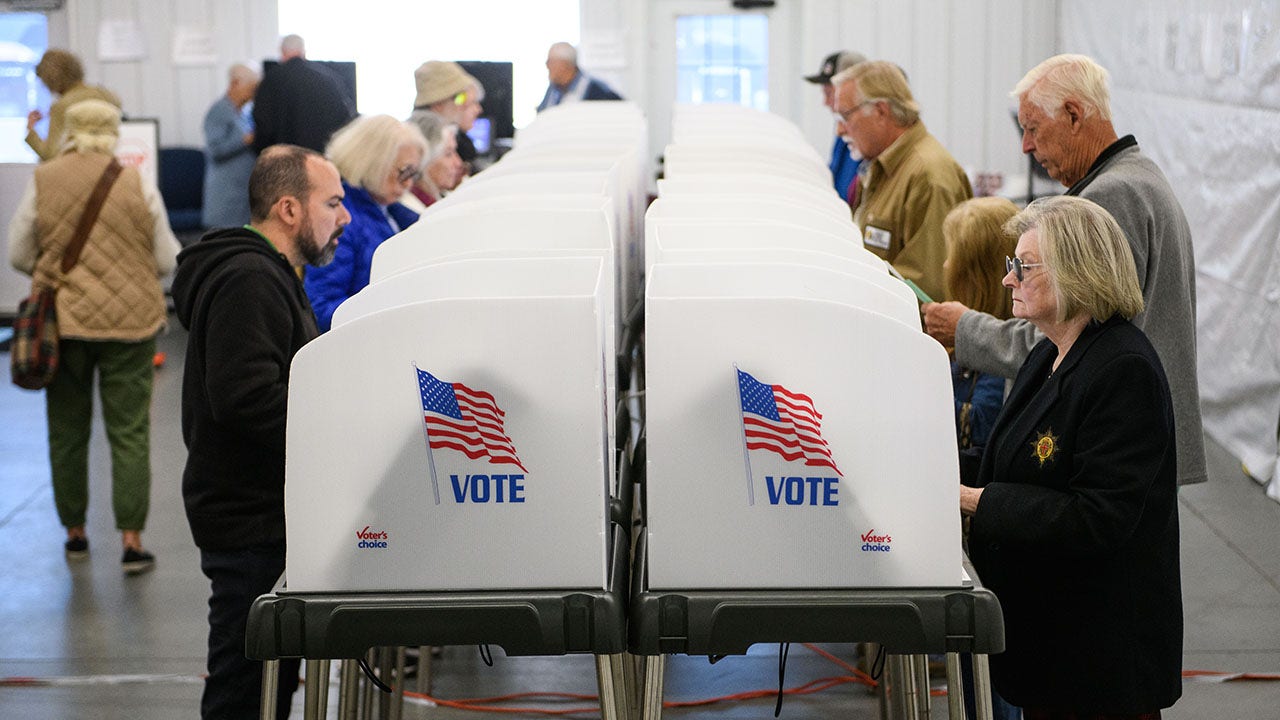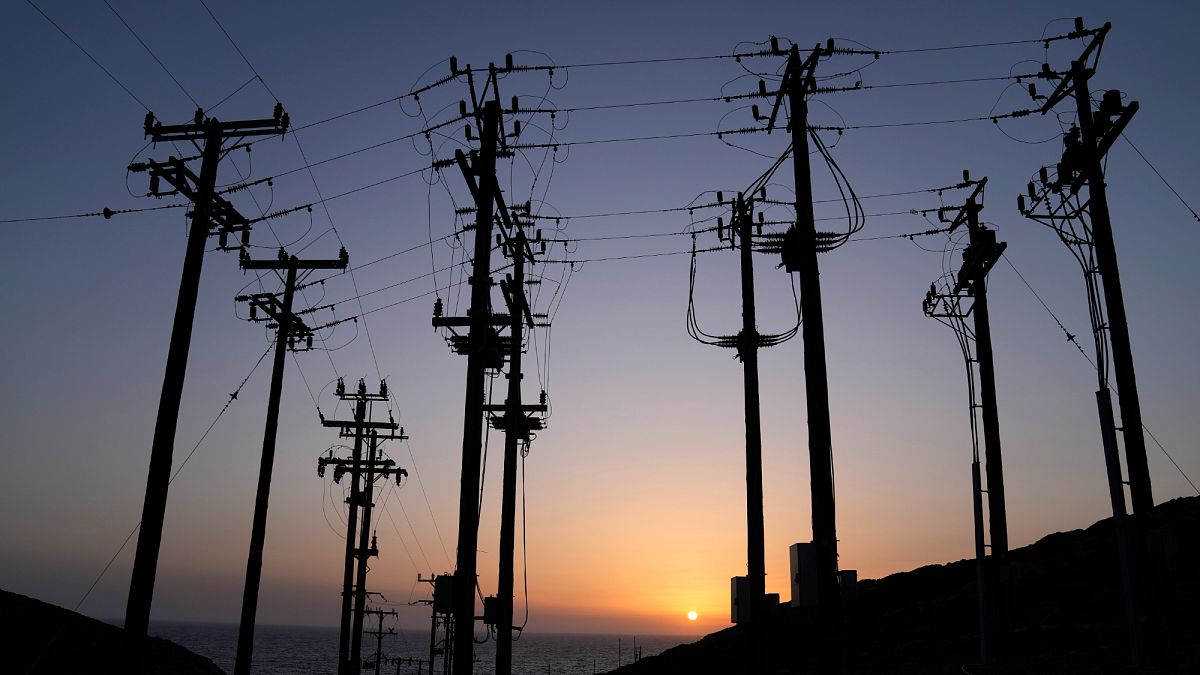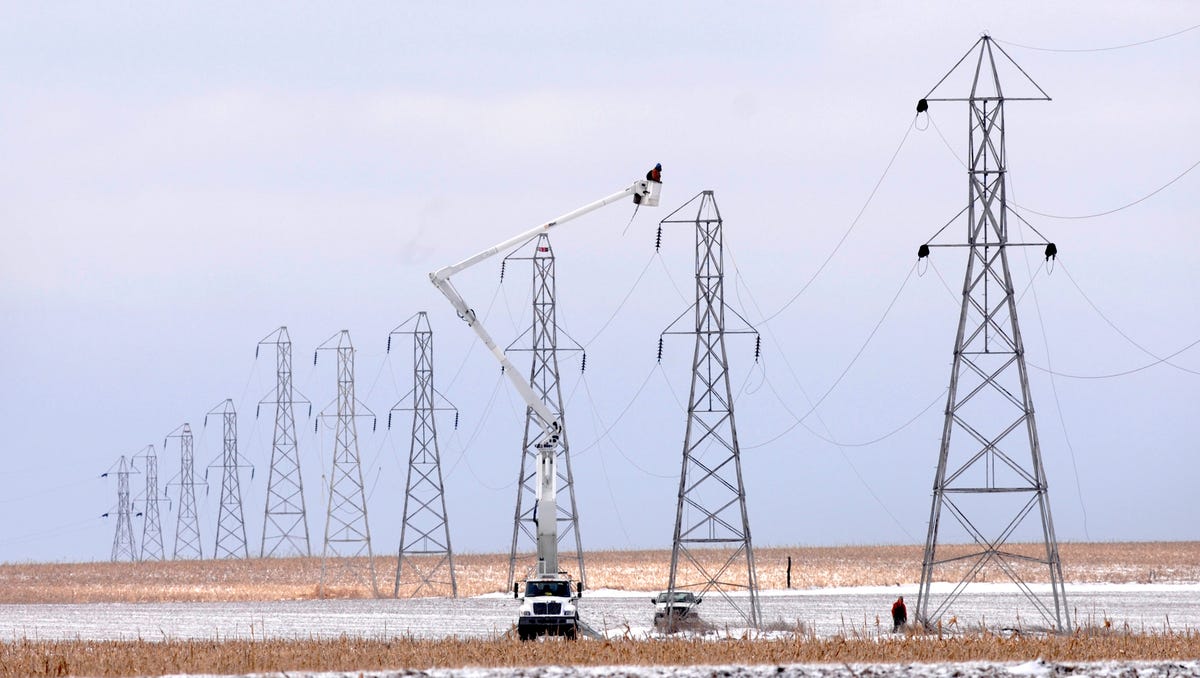Colorado
Many Colorado homes and power grids aren’t ready for more electric vehicle charging. Here’s what experts say needs to be done.

With hundreds of thousands more electric vehicles expected on Colorado highways in the next few years, CBS News Colorado has learned many power grids aren’t yet ready to handle the added power demands to charge those vehicles.
One expert tells us upgrading power grids in time for the state’s goal of 940,000 electric vehicles by 2030 will be “challenging, to say the least.”
Kati Weis, CBS News Colorado
Electrician Rory Berumen, who is also the Executive Director of the National Electrical Contractor’s Association’s Rocky Mountain Chapter, has a front-row seat to long-term planning conversations to update Colorado’s electric infrastructure to meet the needs of more EVs charging in homes and businesses.
“To make sure we can perform all these works with the deadlines that have been provided, it’s going to be challenging, to say the least, and there’s going to be a lot of work that’s going to need to take place to ensure that we can do that,” he said. “So, I think some of the goals are very lofty… we’re in meetings, and they’re very contested from both sides through there, but I know at least from our standpoint, we’re just trying to make sure we’ve got properly trained people in place that can do the work.”
He says right now, many of Colorado’s older electric grids aren’t built to handle the power demands of EV charging, so hypothetically, if suddenly everyone in one of those neighborhoods had an EV charging at once, that could cause black outs.
Or, he says, a more likely possibility would be that the demand might eventually cause some customers to have to sacrifice other electric luxuries.
“You can have outages,” Berumen said. “Or it’s called a brown out, like you read like in California where they’re putting right now these meters up on all the homes where people can’t turn on the air conditioning at certain times, it’ll be the same thing.”
But with many drivers on wait lists for some EVs and many other drivers worried about the potential mileage range these vehicles can offer, not everyone will be switching to electric overnight. Berumen says those factors will help buy some time for power companies to make changes before black or brown outs become a problem.
Kati Weis, CBS News Colorado
However, he says supply chain and manpower challenges will still create big obstacles for critical grid improvements.
“I’ve got to tell you to make sure right now (there’s a need to secure more) transformers. You can’t get enough transformers. Some of them are on two year waits, so, they can build them right now, but if we can’t get all the parts, all the equipment and everything to put them in, it’s going to create some lag time,” Berumen said. “I think those are two big issues. It’s going to be supply chain demand, and it’s going to be manpower shortages that are going to really hold us up if we can make these dates or not.”
Power companies say they’re preparing: “Proactive distribution system planning is so critical”
Executives at the Tri-State Generation and Transmission Association agree that grid updates are going to be critical over the next 10 even 20 years.
“There is definitely going to be a requirement to manage the distribution grids better, and that’s something that we’ve been working on for the last couple of years is that how do you control EV charging,” says Tri-State’s Chief Energy Innovations Officer Reg Rudolph. “What we’re trying to work on is developing and designing programs that control that demand so that we can balance the the existing infrastructure and with demand response, and controlling chargers, and so forth, so that we don’t have to make those infrastructure investments probably as fast as we would have otherwise.”
As a co-op, Tri-State sells power to electric companies across Colorado. Rudolph says they’re working with their members to help install new charging infrastructure in rural areas.
Kati Weis, CBS News Colorado
“One of the biggest challenges with electric vehicles is the public infrastructure, and the infrastructure at the residential level,” Rudolph said. “We’re working with our member systems and their end US consumers to provide rebates to evaluate different technologies. What are the best chargers that can be used? On the public infrastructure charging aspect of it, how do you build a regional network? And a lot of the challenges that we face is that anywhere between 50 and 100 miles is where you’re going going to need a DC fast charger and a lot of times in the rural areas, there isn’t that electrical infrastructure to meet those needs.”
Xcel Energy also says it’s working proactively on the challenges ahead.
“That’s definitely on our radar, and that’s where I think this proactive distribution system planning is so critical,” said Nadia El Mallakh, the Vice President of Clean Transportation and Strategic Partnerships for Xcel.
She says while there is some time before everyone makes the switch, “it’s clearly picking up pace.”
So, she says Xcel is spending $50 million on what she calls “no regrets” investments to trucking corridor grids.
“These are areas where we’ve looked at the system, and we’ve looked at light, and medium, and heavy duty trucking, particularly also along corridors, and where there’s a lot of density to say, ‘okay, what are some upgrades we can make now that are no regrets, and so that the grid can be more ready when these heavier duty EVs come onto the road,’” El Mallakh said. “The great thing is as businesses transition those vehicles over, we see significant carbon emission reductions, but sometimes those can take longer times, because they can trigger more grid upgrades. So, we’re really excited to be doing this.”
El Mallakh also says Xcel is working on advanced metering technology that will help inform other grid update decisions. Read more about those plans by clicking here.
“We can more quickly see and isolate where an outage is, what’s caused it, and how quickly, even sometimes remotely, can repair it. This is going to be really important for EVs in the future,” she said. “We’re planning right now on being able to to determine where we’re seeing high levels of EVs, and that’s going to help us with prioritization of proactive system upgrades.”
Experts also tell CBS News Colorado that changes at a state legislative level will need to be made, including items like financial supports, streamlining permitting processes, and incentivizing the expansion of the electrician workforce.
“I think a big key piece is making sure the regulators and the legislators support us, being able to make proactive distribution system investments that are efficient and wise and really leveraging our customer programs to reward our customers to say, ‘hey, if you charge off peak, that’s great for the grid, it’s great for your pocketbook, and that helps us do efficient grid upgrades,’ so, that we’re not over building, but we’re not under building,” El Mallakh said.
Many individual homeowners will also need to update their electric systems to accommodate the power demands of EV charging. Here’s some expert advice to consider.
Berumen says while industries figure out major grid fixes to accommodate new EV technology, there may also be some important electric upgrades your own home will need if you’re wanting to hop on the EV train.
If your home is an older home with a lower amp panel, he says you’ll need to hire an expert to determine if you should replace your panel to a 200 amp panel that can handle higher power. That’s an upgrade that could cost up to $4,000.
Kati Weis, CBS News Colorado
“If you have a 60 amp or smaller panel, you’re probably going to need to upgrade your service,” Berumen said. “New homes are going to have maybe 200 amp services. There’s going to be a lot of homes out there with 100 amp service, that doesn’t mean that you’re going to have to replace the panel, but a load calculation should be done (before installing an EV charger).”
He also says it will be important to keep in mind where your electric panel is located and if special wiring will need to be installed to ensure your charger can sit in the most convenient place for your at-home parking.
“If your panel is already in the garage, your installation might cost a lot less, so that’s why I’d recommend you get an electrician to come out, so you can plan your costs and nothing surprises you,” Berumen said.
El Mallakh with Xcel says her company is offering rebates to customers to help offset some of the costs of installing a new EV charger.
If you’re interested in evaluating some rebate and incentive programs for EVs, click here to see Xcel’s rebate programs for residents, and here for commercial businesses.
Right now, power companies say it’s better on the grid to charge your electric vehicle overnight, when there’s less demand from other appliances on the power grid, but that can come with safety risks if something is wrong with your car’s lithium ion battery.
There was an explosion at a garage in Erie when a vehicle’s lithium battery was smoking, and firefighters applied water to it.
Erie Police
Firefighters recommend drivers should be around when you charge your EV, in case something goes wrong, so you can call 911.
So what should you do? Charge overnight to avoid stressing the grid, or charge during the day when you’re awake to be able to keep an eye on things?
Berumen says there’s a good compromise: charge overnight, but set the charging at a lower power level so it charges more slowly and safely.
“I only use 80% of the capacity that I’m supposed to be using to charge,” he explained. “So, I think we have a 50 amp breaker in there, I’m using well under that. In a lot of the new cars you can set that in your car, and you can set up the charge time, so they actually stop and start at certain times, as well.”
“All hands on deck” effort required moving forward
Bottom line, experts tell CBS News Colorado EVs are an environmentally friendly, fun-to-drive way of the future that will also ultimately be more cost effective for consumers than gas-powered vehicles, but they say it’s important for homeowners, power companies, and state leaders alike to do some homework before we can get to 940,000 EVs in Colorado by 2030.
“With a growing number of charging stations popping up nationwide, electric vehicles are becoming an increasingly attractive option for many drivers,” Berumen said.
He says the need to upgrade infrastructure on a small scale in private homes and businesses, and on a larger scale for public power grids, has made it a great time to consider becoming an electrician.
“There is a lot of work, and we’re going to need to get a lot of people trained to do the work,” he said.
Some experts in the industry say to ensure public infrastructure is adequately updated by 2030, it will require an “all hands on deck” and “can do” approach.
“I think there’s been a lot of good progress on things like codes and making sure that when we’re building new buildings and homes that we’re integrating this into it, you know whether it’s EV ready or other electrification forms ready that helps, and then really coordinating with the utility on that, so, I think making sure that there’s support for early and often coordination, making sure that there are mechanisms for utilities to lean in and be proactive and invest smartly and wisely,” she said. “It’s a whole system, so, distribution is critical… we want to think about the whole system holistically, and integrate this all.”

Colorado
Home rule special election questioned by Colorado county voters, as well as developer backing

Debate over home rule in Douglas County is heating up, with residents set to vote on the matter in less than two weeks.
A special election will ask voters if they want the county to create their own home rule charter and who should serve on a charter commission. If voters say yes to home rule in the special election, the commission will craft a charter that will be voted on in November.
CBS
County leaders say that charter could free the county from strict state laws and increase local control over things such as taxes, gun laws and immigration enforcement.
Douglas County residents should already have received their special election ballots. That June 24 election is costing the county about $500,000, and many are asking why it needed to happen so quickly.
“I’ve never seen such backlash across party lines in the county,” said Barrett Roth, a Douglas County resident. “If you rush, we don’t have time to ask questions of the people that matter and can influence our votes.”
When Barrett Roth first heard about home rule, he wasn’t sure how to feel.
“I think, like everyone else, I was kind of shocked, and had to learn a lot about it,” Roth said.
And learn more he did. Reading through campaign finance reports, Roth found the “Yes on Local Control” campaign had received $110,000 in donations.
Westside Property Investment Company, the developer behind Dawson Trails, contributed $10,000.
Ventana Capital, which has numerous projects underway in the county, contributed $50,000, far surpassing any previously recorded donation under their name.
Ventana is also involved in litigation with the city of Castle Pines over the city council’s denial of a proposed McDonald’s.
“Why would a land developer be interested in home rule? If it’s for all these liberal versus conservative policies, it’s clearly for a land grab,” Roth said.
CBS Colorado reached out to both companies to ask why they supported the campaign. Westside had “no comment,” and Ventana did not respond.
“There are four committees that are set up in favor of home rule. I actually don’t know all these people. So I don’t know,” County Commissioner George Teal told CBS Colorado. “We will have greater control of how we set the tax base for businesses under home rule. Maybe that’s their interest.”
Teal says he doesn’t know why the developers support home rule, but that the charter could give the county more local control over zoning and exempt them from some state development statutes.
“We’re pursuing home rule to put ourselves in a legal position here, as a legal entity of the state of Colorado, to have more local control,” Teal said. “When you talk about public safety, you talk about having more control over our taxes and being able to lower taxes when we want to as we need to. And then when it comes to being able to work with other government agencies, home rule gives us far greater control with how we interact with other levels of government here in America.”
Other donors to the pro home rule campaign include “The Cundy Harbor Irrevocable Trust,” which contributed $50,000, Teal’s wife Laura Teal, who contributed $100, and Laura Tonner, who contributed $100. Tonner is married to Sean Tonner of Renewable Water Resources, the water developer behind a controversial plan to bring water from the San Luis Valley to Douglas County.
On the other side, “Stop the Power Grab”, a group opposing home rule, has received a total of $30,000 from hundreds of donors, including local Democratic politicians.
Roth is a member of the group. He feels the promises being made about home rule are misleading. Metropolitan State University of Denver professor Dr. Robert Preuhs previously told CBS Colorado home rule does grant more policy-making authority to counties, but it may not be so easy to disregard state laws. Legal battles may ensue after controversial decisions to determine whether the matter is truly a local or a state concern.
“The county commissioners will tell you that home rule will allow them to supersede state law,” Roth said. “They’ve talked about how they can pass laws on gun safety, on abortion rights, on plastic bag fees, and try to battle the state. Well, the battles will take place in court.”
“As long as it is not a matter dealt with in state law, the home rule county does have the ability to legislate,” Teal said.
Roth feels home rule will waste taxpayer money on legal battles and the special election.
“We’re going to have an election in November 2025, so just in a few months, they could have placed it on the ballot for free in just a few months,” Roth said. “But, instead, they’re rushing it over the summer to the tune of $500,000 of taxpayer money. That’s real money.”
“Right now, the cost of the election is coming in at just under $500,000,” Teal said. “Average cost of a home in Douglas County is $800,000, so for less than the average cost of a home here in the county, we get to chart our own course and have that legal mechanism under the state constitution for complete local control.”
Roth was also upset to receive a white book from the county on the home rule measure that did not include an opposing viewpoint.
“They’re essentially putting out campaign literature on taxpayer dime,” Roth said.
The county says they have pro-con statements on their home rule webpage.
“I do think home rule is the right thing to do, and I certainly encourage everyone to vote yes,” Teal said.
As the election draws near, tensions are running high over the county’s future.
“Often, the community feels very divided. If you talk to people, they feel pretty united that this is being rushed,” Roth said. “It’s a waste of money. It’s something no one asked for, and I do think it’s going to fail pretty substantially.”
One week before the special election, the county will hold one last town hall to answer any remaining questions. The town hall will be online at 6 p.m. June 17.
Saturday, a “No Kings” protest held in Castle Rock will also protest the home rule initiative locally.
Colorado
Denver police confront marchers upset with ICE in chaotic exchanges downtown, block group from accessing I-25

Police in Denver responded in full force on Tuesday night to marches downtown after an early evening protest at the Colorado State Capitol.
CBS
Video captured near the intersection of 20th Street and Little Raven Street in Denver showed a large crowd of demonstrators and smoke just before 10 p.m. At one point in the video, a marcher threw an object that looked to be a pepper ball back at police.
At least one person was detained on Tuesday night.
Police also blocked the entrance to Interstate 25 at Broadway so marchers couldn’t enter, and there was another large police presence at Market Street and 20th.
Break-off groups from an earlier peaceful protest against Immigration and Customs Enforcement grew more chaotic as the night went on. Denver police told CBS Colorado rocks and bottles were thrown at officers near Coors Field.
Some video was circulating online showing smoke. CBS Colorado contacted police to find out what it was. Their final report is not available so it’s not known what was used, but they confirmed to CBS Colorado that no tear gas had been used.
Similar confrontations have been happening in several other cities across the country, including Los Angeles. Protests and marches have been going on there for days as demonstrators have been clashing with police. Many protests — including in Texas, in Chicago, and now in Denver — have come about in response to the situation in California.
Colorado
June’s full moon is called a strawberry moon. How to see it in Colorado

Astronomy events to look out for the month of June
Professor Chris Palma shares the top astronomy events to watch this June, from the Strawberry Moon to the summer solstice.
- The June full moon, nicknamed the strawberry moon, will be at its fullest on June 10 and 11.
- This year’s strawberry moon will be the lowest in the sky since 2006 due to a “major lunar standstill.”
- Partly cloudy skies are forecast for June 10 in Fort Collins, while June 11 has a chance of showers and thunderstorms.
June’s full moon is coming with a strawberry on top, and bottom, and is one not to be missed — unless the weather doesn’t cooperate.
Here’s what you need to know to enjoy this celestial show:
Best times to see the June strawberry full moon
The moon will be fullest the nights of June 10 and 11.
This June’s full moon is special in that while all June full moons ride low in the sky, this June’s full moon will be the lowest full moon since 2006, according to EarthSky. More on that later.
While the moon will shine on these nights, there are two special times to view this full moon. The moon will appear plump hanging low in the eastern horizon just after sunset, which is 8:30 p.m. MT in Fort Collins both evenings.
The strawberry moon is the most colorful of the year because it takes a low, shallow path across the sky, Bob Bonadurer, director of the Milwaukee Public Museum’s planetarium, told USA TODAY.
Another optimal viewing time is when the moon crests, the point at which it appears fullest and brightest. That will occur at 1:44 a.m. MT on June 11 and the moon will hang low in the west opposite the sunrise on June 11, which is at 5:29 a.m. in Fort Collins.
Why Tuesday might make for better full moon viewing than Wednesday in Fort Collins
The Fort Collins forecast calls for partly cloudy skies the night of June 10, according to the National Weather Service.
The forecast for the night of June 11 calls for mostly cloudy skies with a 20% chance of showers and thunderstorms before 9 p.m. and a slight chance of showers between 9 p.m. and midnight.
Why the June moon is called the strawberry moon? Will it appear that color?
All full moons have names.
Some Native American tribes called the June full moon by this name because June is the time of year many berries ripen, especially strawberries, according to EarthSky.
Despite the name, don’t think of the color of this moon as a ripe strawberry. However, the moon’s low arc means more moonlight in the Earth’s atmosphere might add a hint of color.
“So there’s a chance it will actually look a little bit reddish or pink, and so that may also be part of the origin of the name,” Chris Palma, professor of astronomy and astrophysics at Penn State University, told AccuWeather.
Why this strawberry moon is special
This June’s full moon will ride the lowest since 2006 because of what’s called a “major lunar standstill,” according to EarthSky.
All June moons ride low in the sky and the sun rides high in the sky this time of year. The summer solstice is June 20.
“It’s all about the inclination of the moon’s orbit, which undergoes an 18.6-year cycle,” EarthSky’s John Jardine Goss told USA TODAY. “The cycle happens because the moon’s orbit is being slowly dragged around — mostly due to the pull of the sun — every 18.6 years.”
This year’s major lunar standstill culminated in January 2025. And we’re still close enough to it that the standstill is affecting the path of this June full moon, EarthSky said.
Reporting by USA TODAY reporter Doyle Rice contributed to this report.
-

 West5 days ago
West5 days agoBattle over Space Command HQ location heats up as lawmakers press new Air Force secretary
-

 Alaska1 week ago
Alaska1 week agoInterior Plans to Rescind Drilling Ban in Alaska’s National Petroleum Reserve
-

 Technology1 week ago
Technology1 week agoMicrosoft will finally stop bugging Windows users about Edge — but only in Europe
-

 Politics1 week ago
Politics1 week agoRed state tops annual Heritage Foundation scorecard for strongest election integrity: 'Hard to cheat'
-

 World1 week ago
World1 week agoTwo suspected Ugandan rebels killed in Kampala explosion
-

 Politics1 week ago
Politics1 week agoTrump pushes 'Big, Beautiful Bill' as solution to four years of Biden failures: 'Largest tax cut, EVER'
-

 Culture1 week ago
Culture1 week agoDo You Know the Jobs These Authors Had Before They Found Literary Success?
-

 World1 week ago
World1 week agoEU trade chief to meet US counterpart in Paris amid tariff tensions


























